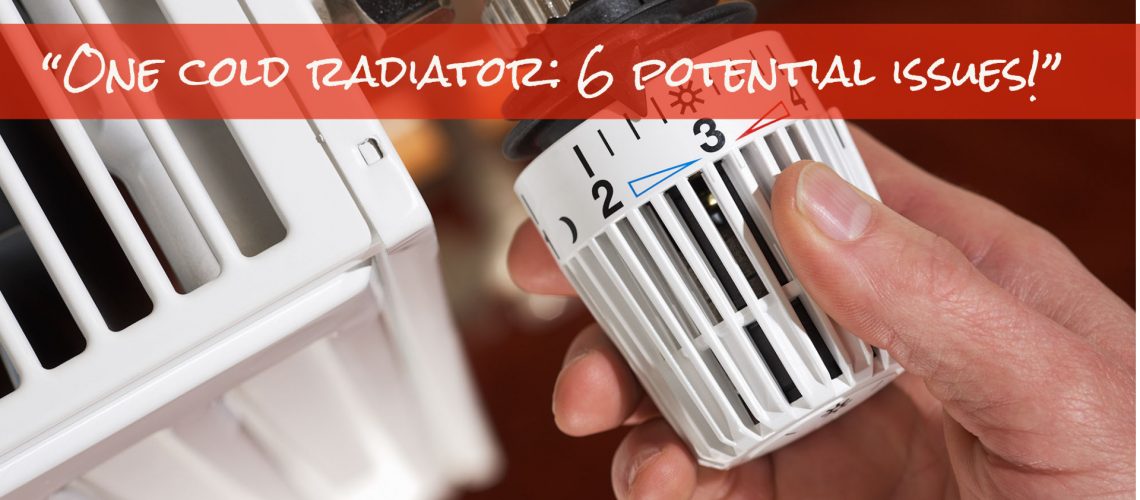Your central heating is on full, yet you have one cold radiator? It seems so frustrating that the rest of the system works well. This issue is quite common in all central heating systems, so don’t worry. In fact, there are quite a few solutions you can try yourself before calling out an expert. In this blog we will explain the issues and offer the best solution for each problem.
Understanding why you have one cold radiator.
The central heating system pumps hot water from your boiler to all radiators via a two-pipe system. First, a flow pipe connects to the outlet of the boiler and into the radiators, usually at the control or thermostat side. Second, a return pipe connects to the outlet of the radiators and into the boiler return. A pump installed on the system, or as part of the boiler (such as a combination boiler) circulates the water to ensure an even heat distribution. This two-pipe system is efficient and effective, however, radiators furthest from the boiler are most likely to have issues. Here’s what to look out for:
Air
The most common issue with any radiator is air. The furthest radiator on the system is prone to collecting air. Check the radiator to see how warm it is from top to bottom. If it is cold at the top, bleed the radiator with the system turned off. You will need to increase the pressure at the boiler or filling loop throughout this process.
Lack of system pressure
As mentioned above, boilers and systems need water pressure to work properly. A lack of pressure prevents the pump from moving the water around the system. This affects the furthest radiators most, so always check you have sufficient pressure. You can find this information on the boiler pressure gauge and in the manufacturer’s instructions.
Valves sticking
The radiators use valves to control the water flowing through them. In many cases, thermostatic radiator valves (TRVs) control the flow end of the radiator. One cold radiator suggests a sticking TRV. This is a simple job to solve in most cases, but requires removing the TRV head to access the seized operating pin. If you don’t feel comfortable fixing this yourself, ask someone who is.
Poorly balanced system
When we install systems it is vital we balance them correctly. A poorly balanced system leads to uneven heating, cold radiators, and inefficiency. To check this, turn you heating on and note which radiators get warm first. Ideally, all radiators heat evenly. If you find some get very hot, while others remain cool, this suggests a balancing issue. We recommend seeking advice from a professional to sort this problem.
Blockages
The symptoms of a poorly balanced system may infact be something much more serious. System water not treated with the correct chemicals during installation will break down the iron content in the system. Iron oxidization creates a sludge within the system, blocking radiators and attacking components, such as pumps and valves. To detect this issue, check how well the radiators heat up. If they are hot at the top but cold at the bottom after 20 minutes of heating, this suggests a blocked radiator. An expert in this field will perform tests and, where appropriate, flush the system.
Weak Pump
A worn or sticking pump will cause symptoms of all the above issues and require a professional to diagnose this issue.
If you have any concerns about your heating and live in the Leeds area, please get in touch.

